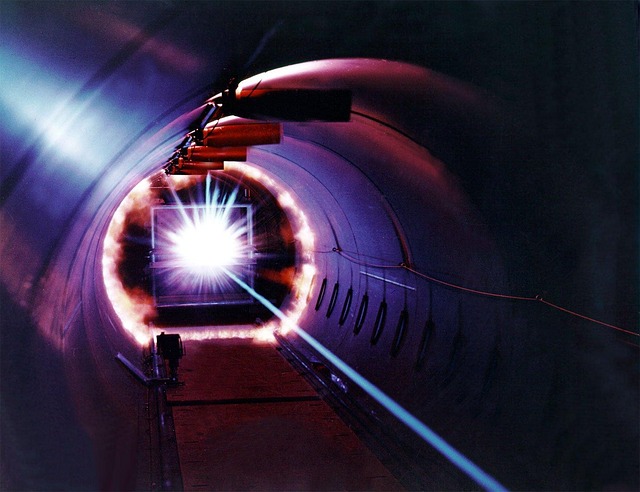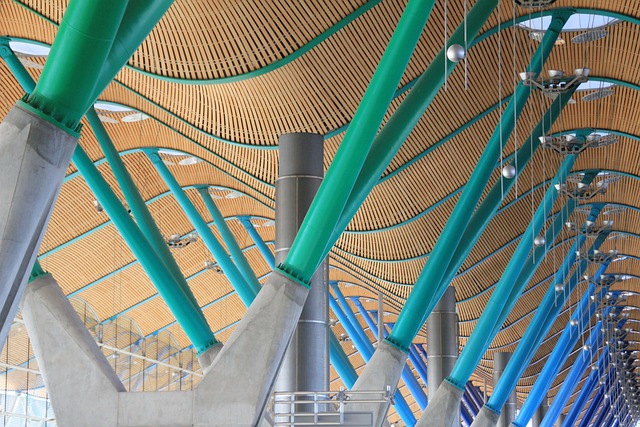Glue Laminated Beams (GLBs) offer superior strength, durability, and longevity compared to Solid Wood Beams, making them a modern construction choice for demanding projects. While GLBs provide cost-effectiveness and better structural performance, they may not match solid wood's aesthetic appeal or flexibility. The decision between GLBs and Solid Wood beams involves weighing structural integrity, budget, environmental impact, and design preferences for each project.
“Looking for robust structural support without breaking the bank? Explore the world of Glue Laminated Beams (GLBs), a cost-effective alternative to solid wood beams. This innovative construction material offers superior strength and versatility, making it an attractive option for modern architecture. In this article, we dissect GLBs’ advantages, such as enhanced structural integrity and reduced waste, while also addressing their limitations. We’ll guide you through the decision process, highlighting key cost considerations when choosing between Glue Laminated Beams and traditional solid wood beams.”
- Glue Laminated Beam: An Overview
- Advantages Over Solid Wood Beams
- Disadvantages and Limitations
- Choosing Between The Two: Cost Considerations
Glue Laminated Beam: An Overview

Glue Laminated Beams: A Modern Alternative to Solid Wood
In the world of construction and architectural design, the choice between solid wood beams and their modern counterpart, glue laminated beams, is a topic of ongoing debate. Glue Laminated Beams (GLB), also known as engineered or composite beams, offer a range of benefits that set them apart from traditional solid wood construction. One of the primary advantages lies in their structural integrity and strength-to-weight ratio—a stark contrast to solid wood, which can be more susceptible to warping, splitting, and cracking over time.
When comparing Glue Laminated Beams vs. Solid Wood, the former demonstrates superior longevity and load-bearing capacity, making them a popular choice in today’s construction landscape. GLBs are comprised of multiple layers of thin lumber glued together under high pressure, creating a strong, uniform structure. This lamination process enhances the beam’s strength and stiffness, ensuring structural reliability even in demanding architectural projects. Moreover, glue laminated beams offer cost-effective alternatives to solid wood, with efficient material use and reduced waste contributing to their affordability. As you delve into the options for structural support, consider visiting us at 18 Clifton St, Unadilla, NY 13849 to explore the innovative possibilities of glue laminated beam design.
Advantages Over Solid Wood Beams

Advantages Over Solid Wood Beams
When comparing Glue Laminated Beams vs. Solid Wood Beams, several key structural benefits become evident. In terms of strength and durability, laminated beams surpass solid wood. The advanced glue lamination process creates a composite structure where multiple layers of wood are bonded together, enhancing both tensile strength and shear resistance. This design is particularly advantageous for load-bearing applications, offering superior structural integrity compared to traditional solid wood beams.
Moreover, longevity is a significant factor. Laminated beams are resistant to rot and moisture, ensuring their structural viability over extended periods. In contrast, solid wood is susceptible to environmental factors like humidity and pests, which can compromise its strength. For cost-effective alternatives without sacrificing quality, glue lamination provides an excellent solution. With enhanced performance in load distribution, fire resistance, and visual appeal while maintaining affordability, laminated beams offer a compelling case for modern construction projects. Give us a call at (607) 369-9341 to explore how these innovations can benefit your next build.
Disadvantages and Limitations

While Glue Laminated Beams offer numerous benefits—including enhanced strength and durability compared to Solid Wood Beams—they also have limitations. One key consideration is cost, as while laminate beams can be more affordable upfront, long-term savings may not always materialize due to factors like maintenance and potential longevity differences. Additionally, aesthetic preferences play a role; Solid Wood beams often possess a natural beauty and warmth that laminate beams struggle to replicate.
Structure and construction are also areas where differences emerge. Solid wood beams inherently provide a certain level of flexibility in design and customization, while Glue Laminated Beams, with their manufactured composition, can be more rigid in terms of shaping and on-site modification. Furthermore, the environmental impact of production should be considered, with some arguing that the adhesive used in laminate beams contributes to a higher carbon footprint compared to traditional solid wood construction methods. To make an informed decision, it’s crucial to weigh these factors against your project’s specific needs and budget by exploring resources like unalam.com for more insights into cost-effective alternatives to solid wood.
Choosing Between The Two: Cost Considerations

When considering cost-effective alternatives to solid wood beams, it’s crucial to understand the financial implications of each option. Glue Laminated Beams vs. Solid Wood Beams present distinct advantages and disadvantages that directly impact project budgets. The initial cost of solid wood beams is often higher due to their natural origins and labor-intensive manufacturing process. This traditional method requires careful selection, cutting, and finishing of individual pieces, driving up material and labor costs.
In contrast, Glue Laminated Beams are an innovative solution that combines multiple layers of wood with powerful adhesives. This construction method is both stronger and more efficient than solid wood. The manufacturing process for laminated beams involves gluing together smaller, less expensive wood strands or veneers, resulting in a cost-effective alternative with superior structural integrity. When considering long-term savings, Laminated Beams offer significant advantages over natural solid wood, making them an attractive option for projects seeking both strength and affordability. For more information on the benefits of Glue Laminated Beams, visit us at 18 Clifton St, Unadilla, NY 13849.
In the battle between Glue Laminated Beams (GLB) and Solid Wood Beams, GLBs offer a compelling cost-effective alternative without compromising structural integrity. Their advantages, such as reduced weight, faster installation, and lower price points, make them an attractive option for many construction projects. However, understanding their limitations is key. Ultimately, the choice between GLBs and solid wood beams depends on specific project needs and budget constraints. By weighing the pros and cons, builders and designers can make informed decisions to ensure structural excellence while optimizing costs.














